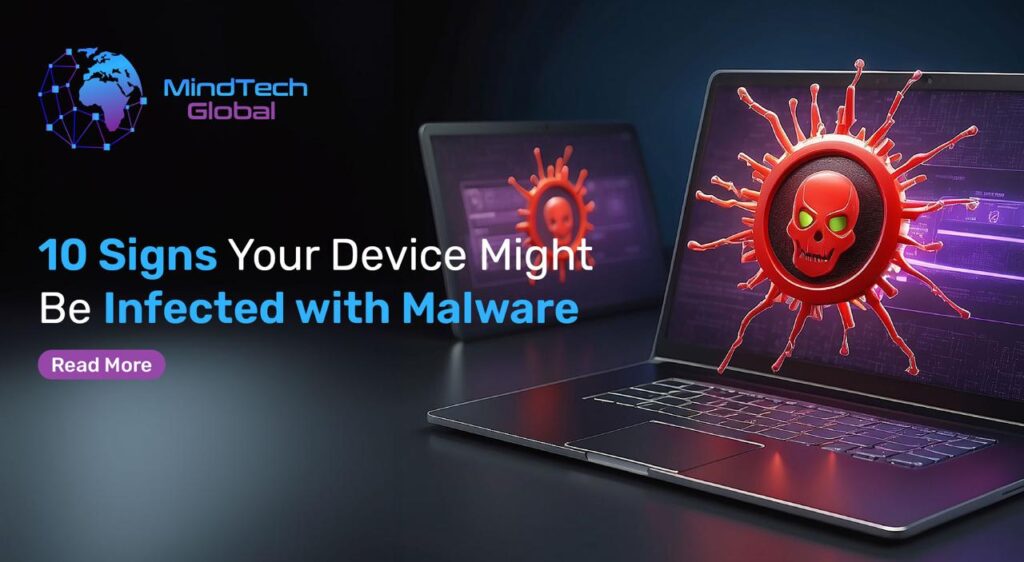
In today’s interconnected digital landscape, the prevalence of malware poses a significant threat to users worldwide. From malicious software designed to steal personal information to insidious viruses that disrupt device functionality, the risks associated with malware infections are ever-present. Therefore, it’s crucial for users to be vigilant and proactive in identifying and addressing potential malware threats before they escalate into larger issues.
Setting the Stage: The Prevalence of Malware in Today’s Digital World
The digital age has brought unparalleled convenience and connectivity, but it has also ushered in a new era of cyber threats. Malware, short for malicious software, encompasses a wide range of harmful programs designed to infiltrate, damage, or gain unauthorized access to computer systems and networks. From viruses and worms to spyware and ransomware, malware comes in various forms, each with its own destructive capabilities.
Importance of Identifying Malware Infections Early
Early detection of malware infections is paramount in mitigating potential damage and safeguarding sensitive information. By recognizing the warning signs of malware infiltration, users can take immediate action to remove malicious software and prevent further compromise of their devices and data. Moreover, proactive measures such as regular system scans and software updates can help fortify defenses against emerging threats.
- Sluggish Performance
One of the telltale signs of a malware infection is a noticeable decrease in device performance. If your once-responsive device suddenly begins to lag or freeze during routine tasks, it could be indicative of underlying malware activity. Malicious software often consumes system resources, such as CPU and memory, leading to sluggish performance and decreased responsiveness.
2: Pop-up Onslaught
Pop-up windows are not only annoying but can also serve as a red flag for malware infections. If you find yourself bombarded with an incessant stream of pop-up advertisements or alerts, it could be a sign that your device has been compromised by malware. These malicious pop-ups often masquerade as legitimate notifications, tricking users into clicking on them and inadvertently installing malware onto their devices.
3: Homepage Hijack
A sudden change in your browser’s homepage without your consent could indicate a malware-induced homepage hijack. Malicious software may alter your browser settings, redirecting you to unfamiliar or potentially dangerous websites upon launching your web browser. This unauthorized modification not only disrupts your browsing experience but also exposes you to various online threats, including phishing scams and malware downloads.
4: Redirect Trouble
Browser redirects, also known as URL redirection, occur when a website automatically sends visitors to a different URL than the one they initially requested. While some redirects are legitimate and serve a functional purpose, others are initiated by malicious actors to redirect users to phishing sites, malware-infected pages, or other unsafe destinations. Therefore, it’s essential to remain vigilant and recognize the signs of malicious browser redirects to protect yourself from online threats.
- Unwanted Toolbars
Unwanted browser toolbars and add-ons are common indicators of malware infiltration and can significantly impact your browsing experience. These malicious extensions often masquerade as legitimate software and may be installed without the user’s knowledge or consent. Once installed, they can modify your browser settings, track your online activities, and expose you to various online threats, including phishing scams and malware downloads.
- Email Anomalies
Malware-generated emails, also known as phishing emails, are deceptive messages designed to trick recipients into taking action that benefits cybercriminals. These emails often masquerade as legitimate communications from trusted sources, such as financial institutions, government agencies, or reputable businesses, and may contain malicious attachments or links. By exploiting human psychology and social engineering techniques, cybercriminals attempt to lure unsuspecting users into downloading malware, divulging sensitive information, or transferring funds to fraudulent accounts.
- Error Message Overload
Unusual error messages can be a symptom of malware infections and should not be ignored. While some error messages are benign and can be easily resolved, others may indicate more serious underlying issues, such as file corruption, system instability, or malware activity. Therefore, it’s essential to investigate the cause of error messages promptly and take appropriate action to address any potential security threats.
- Mysterious Programs
The sudden appearance of unknown programs on your device can be a cause for concern and may indicate a malware infection. These mysterious programs often manifest as unauthorized software installations, unfamiliar icons or shortcuts on your desktop, or unknown processes running in the background. While some unknown programs may be benign and easily removable, others may be malicious in nature and pose a significant threat to your device’s security and your personal information.
- Social Media Hijack
Social media platforms have become fertile ground for malware propagation, with cybercriminals leveraging these networks to spread malicious content and infect unsuspecting users. From phishing scams and malware-laden links to fake profiles and fraudulent advertisements, social media hijack attempts come in various forms and can have devastating consequences for victims. Therefore, it’s essential to exercise caution when using social media and remain vigilant against potential security threats.
- System Crashes
System crashes are a common consequence of malware infections and can result in data loss, system instability, and compromised device security. Malicious software can exploit vulnerabilities in your device’s operating system or hardware components, leading to sudden crashes.
Conclusion
Detecting and addressing malware infections early is crucial in safeguarding your devices and personal information from cyber threats. By recognizing the warning signs of malware infiltration and taking proactive measures to mitigate potential risks, users can protect themselves against the detrimental effects of malicious software.
Moreover, staying informed about emerging cyber threats and adopting a proactive approach to cybersecurity can help individuals and organizations stay one step ahead of cybercriminals and safeguard their digital assets in an various ways.


